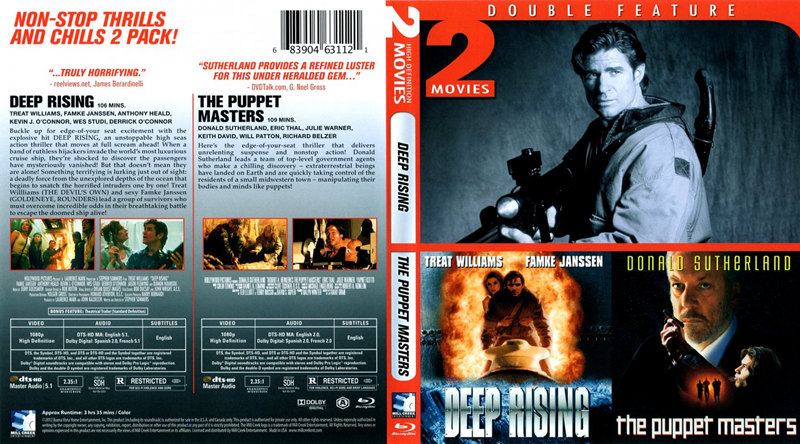Here’s a simple quiz: You’re at the multi-plex and three movies are playing. Which one are you apt to see, based on the title alone?
a) “A Princess of Mars”
b) “John Carter, Warlord of Mars”
c) “John Carter”
I know. Someone at Disney had to be thinking, “We’re the princess people. We CAN’T market an action movie in which the princess is secondary to the hero by calling it “A Princess of Mars.” Fair enough. But then why not call it “Edgar Rice Burroughs’ A Princess of Mars.” No one would ever associate Burroughs with the Barbie and tiara aisle in toy stores. Even “John Carter, Warlord of Mars” is superior, which is how the Marvel Comics people handled the original Burroughs title when they adapted it in 1977.
But “John Carter”? Bleccch. No wonder audiences were so unenthusiastic and critics so put off before the title sequence even began to roll.
A Princess of Mars (1917) was one of Burroughs’ sci-fi/fantasy novels. It begins in the U.S., where Carter, an ex-confederate in post-war America, is looking for gold but, needing to hide from pursuing Apaches, ends up in a sacred cave that somehow transports him to Mars, or “Barsoom,” as the locals call it. There, on a planet without the same gravitational pull, he finds that he has super powers: great leaping ability and strength. He gets involved with a race of people called Tharks. It’s not exactly “The Man Who Would Be King,” as the Tharks seem ready to embrace him or kill him, depending on their mood. But if you haven’t read Burroughs’ book, it can get confusing, and not just because the writers and director Andrew Stanton drop you right in the middle of a Martian Civil War between . . . well, that’s what’s tough to figure out, at first.
There are über-beings (Therns) that have the power to shape-shift and to give great power to others, including the nefarious Sab Than (Dominic West), whom they (for reasons we don’t quite get) want to conquer and rule all of Mars. He’s from the city of Zodanga, which has been at war with the city of Helium for a thousand years. Meanwhile, where do the Tharks fit in? And we wonder as well about the Princess of Mars, Dejah Thoris (Lynn Collins), who was supposed to marry Sab Than in order to craft an alliance and end the war. There’s something, too, about a ninth ray and the medallion responsible for Carter’s transport to Mars, and an ending that’s even more complicated. When you throw near-constant action into the mix, it can be a little dizzying. And in truth, it’s easier to figure things out on the page when the names of the races and people are right there in front of you, than it is to decipher the same information on film.
Carter gets involved with a Martian “dog” and a Thark named Sola (Samantha Morton) who, like Jar Jar Binks, seems to get everything wrong and is just one brand on her back away from being put to death because of it. He earns the trust of the Tharkan king, Tars Tarkas (Willem Dafoe), and, of course, he gets involved with the Princess of Mars.
Taylor Kitsch is likable enough in the title role, joined by a cast that’s unrecognizable, given the extensive make-up and prosthetics, among them Thomas Haden Church, James Purefoy, and Bryan Cranston. Daryl Sabara (“Spy Kids”) appears in a frame sequence before the main body of the film is told in flashback.
My family and I liked the visual design very much, and the action and special effects are well done. But this is one of those films where it’s easy to be too subtle. The action moves so quickly at times that you feel as if you’re spinning around, and when you’re also trying to figure out who’s who and what’s what, it can make you feel like the next blindfolded player in a game of Pin the Tail on the Donkey—wondering who’s the jackass that couldn’t explain all of this better. That would be Stanton, Mark Andrews, and Michael Chabon—the latter, two talents who were working on their first screenplay. In a way, it’s too bad that Stanton didn’t bring writers onboard who had experience with action films and to offset his own strengths in screenwriting (“Toy Story,” “A Bug’s Life,” “Monsters, Inc.,” “Finding Nemo,” “WALL-E”). Chabon wrote the story for “Spider-Man 2,” but not the screenplay.
Curiously, despite all of the precarious situations that the characters find themselves in, I had a hard time feeling apprehensive on their behalf, or caring as much as I should have. So is character development the culprit? I don’t know. I only know that it wasn’t as satisfying or engaging as it could have been. And that’s the last thing Disney needed, after the disappointing “Mars Needs Moms” mo-cap adventure.
“John Carter” is rated PG-13 for intense sequences of sci-fi violence and action.
Video:
This “John Carter 3D” combo pack comes with a 3D Blu-ray, Blu-ray, DVD, and Digital Copy. I watched the Blu-ray first, and was blown away by the picture quality—the rich colors, the strong black levels, the level of detail in every frame. But in 3D, it’s less impressive. The reason? Action has always presented a challenge for 3D, and you lose some of the edge detail in the blur of action. Then too, for a 3D film there just aren’t as many “wow” factor moments. Things don’t leave the plane of the TV as often as you might expect, but there is considerable depth. The 3D Blu-ray transfer (MVC/MPEG-4) and the Blu-ray transfer (AVC/MPEG-4) are clean, with no visible problems or artifacts.
Audio:
The featured audio is an English DTS-HD MA 7.1 that spreads the sound nicely across the speakers. Ambient sound is really ramped up, though the center channel sometimes suffers because of it. You’ll need to turn the volume up to hear the dialogue, or else it sounds as if people are mumbling. Once you hit a certain level, though, everything is fine. When the airships wage war, the subwoofer really pounds away, but even in quieter scenes (What are there? Two or three?) the sound seems rich and enveloping. My only other observation is that sometimes the movement of sound across the field seems asynchronous. Still, it’s a superior audio experience, with additional options in French and Spanish Dolby Digital 5.1 and subtitles in English SDH, French, and Spanish.
Extras:
When a film disappoints a studio, there are usually either a ton of bonus features to justify the attempt, or relatively few, as if people just want to get on with their lives (and next projects). Here it’s a combination of the two. Stanton and producers Jim Morris and Lindsey Collins tell a sometimes-frightening tale of how it all came to be, falling into their personal orbits like one big coincidental meteor of a project. The group takes a problem/solution approach to the commentary, identifying things that were challenges and talking about how they resolved them. Other than that, though, there are just two other making-of features: a 35-minute production diary titled “360 Degrees of John Carter,” in which the camera shadows Stanton, and “100 Years in the Making,” a mini-bio on Burroughs and an overview of his John Carter novels, including attempts to bring the difficult project to the screen. Other than that, there’s just a two-minute blooper reel that’s more mistakes than laughs, and 10 deleted scenes (with optional commentary from Stanton). They run a total of just under 20 minutes, and are mostly unfinished shots.
Finally, there’s the Disney Second Screen Interactive Experience, for the fidgeters who can’t just sit and watch a film without holding an iPad or laptop. Additional content is available this way.
Bottom line:
“John Carter” is a tough film to nail down. There are a lot of good things going on, but it also feels a little flat and two-dimensional—kind of like an exercise in storytelling, rather than the telling of a compelling story. When the dust clears, it falls somewhere between a 6 and a 7 out of 10, on the Movie Met scale—somewhere between disappointing and good.


